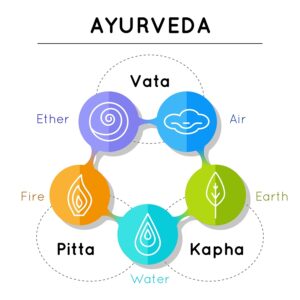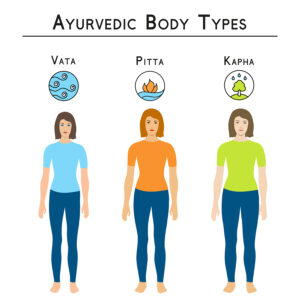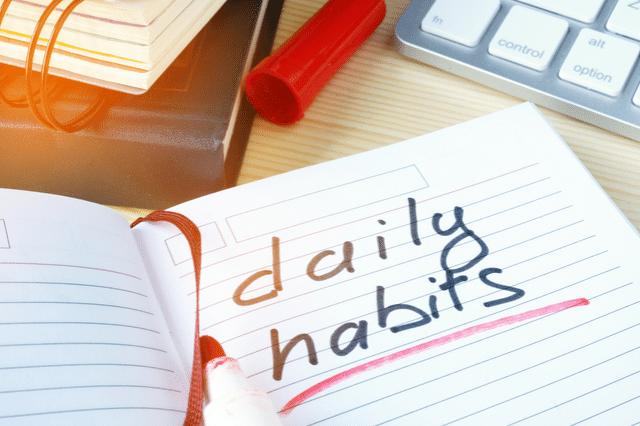Ancient Vedic scholars of India brought the Ayurvedic rituals into being over 5000 years ago. They knew it would help people feel better, live longer and live life more efficiently with less stress and discomfort in their life.
In today's world where so many are looking to holistic medicine for guidance on how to avoid disease and toxic pharmaceuticals, Ayurveda offers guidance on how your body operates specifically tailored toward helping you get well.
Here we take a look at how Ayurveda offers remedies and rituals specific to you.
In Ayurveda, all things are taken into consideration. To quote one of my teachers, Dr. Marc Halpern, “nothing is right for everyone and everything is right for someone. Ayurveda is the path of understanding what is right for you”.
Ayurvedic rituals extend beyond the treatment of illnesses and everyday maladies. You can practice Ayurveda every single day. And most Ayurveda practitioners recommend you do just that. Through consistency and thoroughness, you can achieve optimal health in every layer of your being and facet of your life.
Your unique constitution can be known by a variety of factors. Body type, sleeping patterns, digestive health, elimination tendencies, skin type, are all clues to your specific dosha.
What's Your Dosha?


You and everyone else has a unique combination of energies that must be in balance if you want to stay healthy. The three energies or doshas of Ayurveda are known as Vata, Pitta, and Kapha. If you are new to Ayurveda, you may appreciate having the three doshas explained in detail.
Vata
Vata energy is ethereal, light, changeable, and erratic, and most potent between the hours of 2 AM until 6 AM and 6 PM until 2 AM. These times of day might feel lighter, a bit less dense or anxiety-inducing in comparison to Kapha and Pitta hours.
You might have a Vata imbalance if you feel familiar with the below symptoms:
- Prone to weight loss
- Dry skin
- Feeling ungrounded
- Cold hands or feet
- Constipation
- Insomnia
You can learn more about Vata Dosha here.
Pitta
Ruled by Fire, Pitta peaks during summertime. Within a day, Pitta rises during the daytime hours – 10 AM until 2 PM. During these hours, you should slow down a bit. Exercise would not be ideal during the midday heat, even in wintertime.
Pitta hours return at 10 PM and last until 2 AM. If you have a Pitta imbalance, you should take special care not to overexert yourself during Pitta hours and days.
Common symptoms hinting at a Pitta imbalance include the following:
- Skin inflammation
- Rashes
- Acne
- Short temper
- Increased anxiety
You can learn more about Pitta Dosha here.
Kapha
With its elements of Earth and Water, Kapha defines late winter into early spring. As the Earth becomes muddy, Kapha can be quite stubborn. Kapha rules the early morning hours of 6 AM until 10 AM.
In the evening, when Ayurveda asks you to wind down and get to bed by1 0-10:30 pm. Kapha guides you through your evening routines from 6 PM until 10 PM.
You might have a Kapha imbalance if you recognize a few of the below symptoms:
- Dewy skin
- Oily skin
- Lethargy
- Fatigue
- Prone to weight gain
Ayurvedic Rituals

Some Ayurvedic practices relate to the seasons or a specific climate. These can take a bit of time to come to know and understand, but the general Ayurveda practices shared below apply to everyone – no matter where you live or your present season.
Digestion
A lot of the general practices in Ayurveda revolve around improving digestive health. Ayurveda relies on the idea that the gut and digestion are central factors in maintaining health and well-being. Many methods work to strengthen, soothe, or balance Agni, your digestive fire. If Agni is strong, you can fully absorb and digest the food you consume in a way that benefits your health.
Syncing to Mother Nature's Rhythms
Very few people follow the natural rhythms of the day since electricity transformed our lives. Ayurveda asks you to tune in to the Earth's natural rhythms. Through the seasons you can come to know nature's cycles. According to Ayurveda, the more you sync with the Ayurvedic clock, the better you will feel.
Rising with the sun might mean waking up 30 minutes earlier than usual for a few days. Progress from there as you adjust, waking up an hour earlier than your usual alarm. Eventually, you might wake up around the same time as the sun.
Ayurveda asks you to rise a bit before daybreak, but that can take some adjusting. Be patient with yourself as you shift your sleeping rhythms.
If the sun sets past the time when you typically begin to wind down, honor that rhythm, too. Rest is entirely acceptable, no matter how much emphasis modern society places on productivity and endless work.
Seasonal Shifts
During wintertime, wind down your day a bit earlier than usual. Embrace a slower pace during the winter months to honor its seasonal rhythm – one of lengthy rest and nesting within.
Morning Routines

Lemon Water
Upon waking, first thing's first – a glass of room temperature lemon water. In Ayurveda, eight ounces of warm water with a splash of lemon squeezed into the glass proves to be beneficial in getting things moving. The soothing drink might eventually be able to replace any caffeine habits you might be trying to kick.
Elimination Shortly After Rising
Elimination, in the Ayurveda world, means going to the bathroom and emptying your bowels. This should occur shortly after waking, and the warm water and lemon might aid in such timeliness.
Tongue Scraping

Tongue scraping requires a tool that will scrape the built-up layers of mucus and phlegm off of your tongue. Tongue scraping aids in digestive tract functioning, respiratory health, and can lessen congestion. If you do not have access to a proper tongue scraper, a clean spoon does the trick, but a toothbrush is not nearly as effective.
To practice tongue scraping, follow these steps:
- Stand in front of a mirror so you can see what you are doing.
- Open your mouth and stick out your tongue.
- With your tongue scraper in one hand, place the curved side towards the middle or back of your tongue. If you have not practiced tongue scraping before, do not push yourself and reach too far back with your first attempt. As you become familiar with the technique, you can reach further back. You should not feel as if you are gagging the entire time you perform tongue scraping.
- Slowly, draw the tongue scraper towards the tip of your tongue with slight pressure. Do not push the tongue scraper towards the back of your tongue. It should only ever move forward towards your mouth so that bacteria can be removed.
- Scrape a couple of times until you have covered the entire surface of your tongue. Between scrapes, wipe the scraper with a washcloth or tissue.
- After your last scrape, rinse the scraper with warm water and soap. Dry it off with a clean towel and store it in a dry area.
Keep in mind; this process should not be painful. If you apply too much pressure, you cut your tongue or feel pain, lighten up a bit. This should be a gentle process that does not damage your taste buds or cause discomfort.
You can learn more about the benefits of tongue scraping here.
Mid-Day Routines
Make lunch your most nourishing meal. Occurring in the middle of the day, during Pitta hours, your digestion should be fully up and running.
This is important to get the most nutrition and adequately absorb them. Lunch should be your largest and most complete meal of the day. Any other meals you eat throughout the day should be relatively light in comparison.
Honoring Food
With all you consume, how often do you honor the food on your plate? The warm blend in your mug? The water in your bottle? Take a pause before eating your food. Infuse it with blessings and gratitude, as it will nourish you on a cellular level. The blessings, then, will nourish you, too.
Evening Routines
Self-Massage/Abhyanga
The practice of abhyanga, self-massage, requires about 15-20 minutes of your time. Using warm oils and your own hands, you can improve circulation, detoxify, release muscle tension or joint pain, and soften your skin.
Depending upon your Dosha, you will use a specific oil and practice a designated amount of time each week. Unsure of your Dosha?
Practicing a couple of times each week with jojoba oil would be your best bet.
- For those looking to balance Vata, practice abhyanga 4-5 times a week with sesame or almond oil.
- For those looking to balance Pitta, practice 3-4 times a week using coconut or sunflower oil.
- For those looking to balance Kapha, practice 1-2 times a week using safflower oil.
Follow these steps to perform abhyanga:
- Warm your oil of choice to a comfortable temperature that feels safe for your skin. Use approximately ¼ cup.
- Sit, or stand, in a reasonably warm room.
- Starting at the crown of your head, apply the oil in circular strokes. Massage your entire scalp for a few moments before moving onto your face.
- With upward movements, continue to circle the oil around your forehead, temples, cheeks, and jawline. You can massage the outer parts of your ears, as well.
- Moving to your arms and legs, lengthen your strokes. Return to circular movements on the elbow and knee joints. Continue to direct the movements upwards towards your heart.
- For your abdomen and chest, use broad, circular motions.
- Lastly, take a few moments to massage your feet.
Avoid rinsing off immediately. Grant yourself time to sit with the oil in stillness for 5-15 minutes so that your skin can fully absorb the oil. Take a warm bath or shower and use a gentle cleanser to remove the leftover oils.
After your bath or shower, dry off gently. Avoid vigorously rubbing a towel on your skin as it is now extra sensitive following the massage.
Dry Brushing

Practicing before bed and then taking a shower can lighten you up a bit before tucking into bed. Alternatively, this ritual works just as well in the morning if you prefer to shower after waking.
Pranayama
When translated from Sanskrit, pranayama means life force and extending. So, the practice of regulating and exploring your breath can strengthen your life force. Such a concept dwells entirely within the wide world of Ayurveda. Depending upon the season and your Dosha, different pranayama will be ‘ideal.'
One of the most popular and beneficial methods, though, is Nadi Shodhana. Nadi Shodhana, or ‘alternate-nostril breathing,' brings your physical and subtle bodies into balance.
Essentially, you close your right nostril with one finger, inhale through your left nostril, close your left nostril with another finger, open your right nostril, and exhale through your right nostril. Through repetition of this pattern, you can release built-up mucus and balance your subtle bodies, too.
Get detailed Pranayama instruction here.
Your Rituals
The rituals and practices you choose to explore are entirely up to you. It would be best to determine your Dosha before moving forward in some of the more specific practices or Ayurvedic dietary recommendations.
Weaving in some of the general rituals, such as oil pulling, tongue scraping, dry brushing, and self-massage, can be a wonderful place to begin your journey in Ayurveda.




